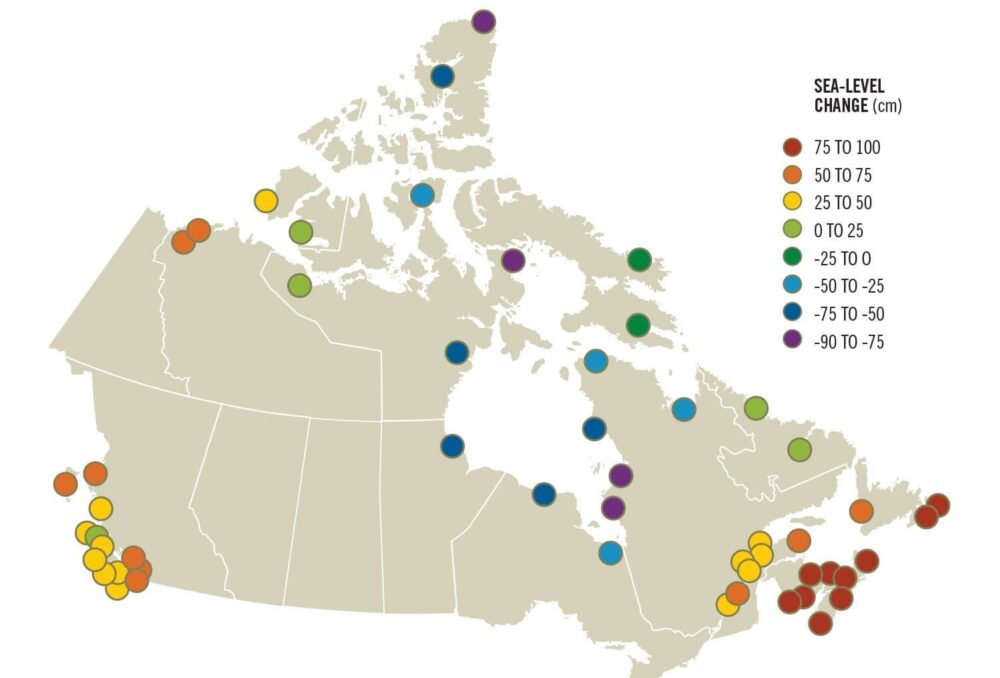The Urgent Threat Of Rising Sea Levels: Protecting Coastal Areas

Table of Contents
The Causes of Rising Sea Levels
The primary drivers of rising sea levels are intrinsically linked to climate change. The increase in global average temperatures, primarily due to anthropogenic greenhouse gas emissions, is causing significant changes in our oceans and ice sheets. This is manifested in several key ways:
-
Increased Greenhouse Gas Emissions Leading to Global Warming: The burning of fossil fuels (coal, oil, and natural gas) releases vast quantities of greenhouse gases into the atmosphere, trapping heat and causing a gradual increase in global average temperatures. This is the fundamental driver of climate change and subsequently, rising sea levels.
-
Thermal Expansion: As ocean water warms, it expands in volume. This thermal expansion contributes significantly to the overall rise in sea level. Even a seemingly small increase in temperature can lead to a measurable expansion of the water column.
-
Melting Glaciers and Ice Sheets: The accelerated melting of glaciers and ice sheets, particularly in Greenland and Antarctica, is adding vast quantities of freshwater to the oceans. This influx of water directly contributes to the observed rise in sea level and accelerates the process.
-
Sea Level Rise Projections: Scientific projections consistently indicate a continued and accelerating rise in sea levels throughout the 21st century and beyond. These projections vary based on different emission scenarios, but even the most conservative estimates point to substantial increases with potentially catastrophic consequences for coastal regions. Understanding these projections is crucial for implementing effective coastal protection strategies.
The Impacts of Rising Sea Levels on Coastal Areas
The impacts of rising sea levels are multifaceted and devastating, affecting both natural ecosystems and human populations. The consequences extend far beyond simply higher water levels:
-
Increased Coastal Erosion and Beach Loss: Rising sea levels exacerbate coastal erosion, leading to the loss of beaches, dunes, and other coastal landforms. This threatens vital ecosystems and coastal infrastructure.
-
More Frequent and Severe Coastal Flooding Events: Higher sea levels increase the frequency and severity of coastal flooding events, putting coastal communities and infrastructure at greater risk. Even relatively minor storms can cause significant flooding in low-lying areas.
-
Saltwater Intrusion: Rising sea levels lead to saltwater intrusion into freshwater aquifers, contaminating drinking water supplies and impacting agriculture in coastal regions. This threatens food security and human health.
-
Loss of Coastal Habitats and Biodiversity: Coastal ecosystems, such as mangroves, salt marshes, and coral reefs, are highly vulnerable to rising sea levels. These habitats provide critical ecosystem services and support significant biodiversity. Their loss has cascading effects on the entire coastal environment.
-
Displacement of Coastal Communities and Infrastructure Damage: Rising sea levels and associated flooding and erosion events force the displacement of coastal communities, resulting in significant social and economic disruption. Coastal infrastructure, including roads, buildings, and power plants, is also at risk of damage or destruction.
Strategies for Protecting Coastal Areas
Protecting coastal areas from the impacts of rising sea levels requires a comprehensive and multi-faceted approach combining various strategies:
-
Construction of Seawalls and Other Hard Engineering Solutions: Seawalls and other hard engineering structures can provide physical barriers against rising waters and erosion. However, these solutions can be costly, environmentally disruptive, and may not be sustainable in the long term.
-
Implementation of Nature-Based Solutions: Nature-based solutions, such as mangrove restoration, dune stabilization, and the creation of artificial reefs, offer more sustainable and ecologically beneficial approaches to coastal protection. These solutions often mimic natural processes and enhance coastal resilience.
-
Development and Implementation of Effective Coastal Management Plans: Comprehensive coastal management plans are essential for coordinating and integrating various coastal protection strategies. These plans should consider long-term projections of sea level rise and incorporate adaptive management strategies.
-
Investment in Early Warning Systems for Coastal Flooding: Investing in advanced early warning systems for coastal flooding is crucial for mitigating the impacts of extreme weather events. These systems allow for timely evacuation and minimize loss of life and property.
-
Relocation of Vulnerable Communities: In some cases, the relocation of communities from highly vulnerable coastal areas may be necessary to ensure their safety and well-being. This requires careful planning and community engagement.
The Role of Sustainable Coastal Management
Sustainable coastal management is paramount for long-term protection. This approach requires:
-
Adopting an Integrated Coastal Zone Management (ICZM) Approach: ICZM considers the interconnectedness of coastal ecosystems and human activities, fostering a holistic approach to coastal management.
-
Engaging Local Communities in Planning and Implementation: Successful coastal protection strategies require the active participation of local communities. Their knowledge and engagement are crucial for effective implementation and community buy-in.
-
Implementing Effective Policies and Regulations: Strong policies and regulations are essential for guiding coastal development, protecting coastal ecosystems, and promoting sustainable practices.
-
Promoting Sustainable Development Practices in Coastal Areas: Sustainable development practices minimize the environmental impact of human activities and promote the long-term resilience of coastal communities and ecosystems.
Conclusion
Rising sea levels pose a significant and escalating threat to coastal communities and ecosystems globally. Addressing this urgent challenge requires a multifaceted approach encompassing both hard engineering solutions and sustainable coastal management strategies. We must prioritize nature-based solutions, integrate coastal zone management, and engage local communities to create resilient coastal areas. By investing in effective sea level rise mitigation strategies and adopting sustainable practices, we can safeguard our communities and the invaluable coastal ecosystems for future generations. Let's work together to combat the threat of rising sea levels and build resilient coastal communities. We need proactive planning and immediate action to lessen the impact of rising sea levels and protect our coastlines.

Featured Posts
-
 Zware Kritiek Op Kompany Een Vernederende Prestatie
May 11, 2025
Zware Kritiek Op Kompany Een Vernederende Prestatie
May 11, 2025 -
 Declining Earthquake Rates On Santorini A Scientific Perspective
May 11, 2025
Declining Earthquake Rates On Santorini A Scientific Perspective
May 11, 2025 -
 Ny Knicks Vs Cleveland Cavaliers Where To Watch Time Tv Channel And Live Stream
May 11, 2025
Ny Knicks Vs Cleveland Cavaliers Where To Watch Time Tv Channel And Live Stream
May 11, 2025 -
 Drag Race Season 17 Episode 13 Preview A Family Affair With The Drag Baby Mamas
May 11, 2025
Drag Race Season 17 Episode 13 Preview A Family Affair With The Drag Baby Mamas
May 11, 2025 -
 Pope Franciss Successor A Look At Nine Leading Contenders
May 11, 2025
Pope Franciss Successor A Look At Nine Leading Contenders
May 11, 2025
